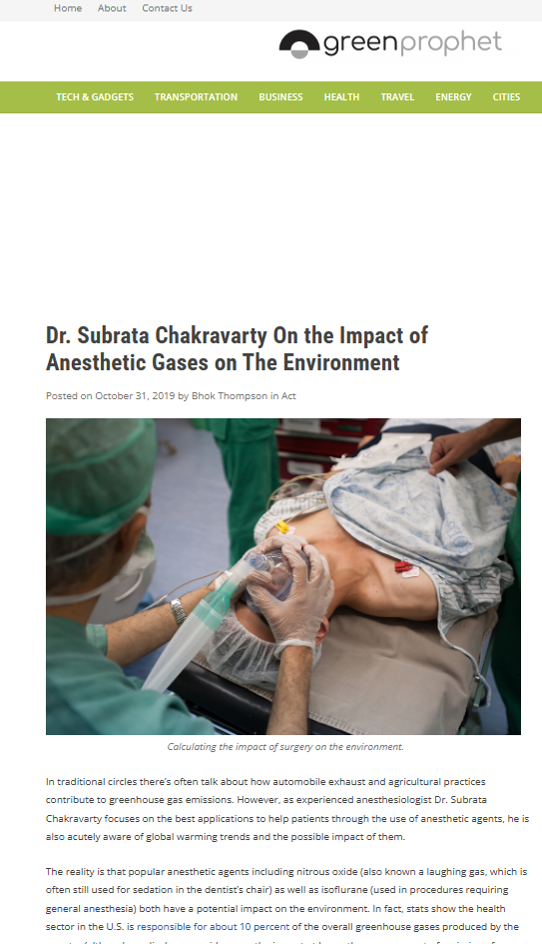-IMPACTS OF ANESTHETIC GASES ON ENVIRONMENT - By Dr. Subrata Chakravarty

Dr. Subrata Chakravarty, a seasoned anesthesiologist, focuses on patient care through effective anesthesia while also addressing the environmental impact of anesthetic gases on global warming.
Common Anesthetic Gases and Their Environmental Footprint
- Nitrous Oxide and Isoflurane: Commonly used in anesthesia, nitrous oxide (laughing gas) and isoflurane can contribute to greenhouse gas emissions. Although the U.S. healthcare sector contributes about 10% of the nation’s total emissions, medical gases are responsible for less than 1%.
- The Shift to HFCs: As CFCs were phased out due to ozone layer damage, alternatives like sevoflurane and desflurane (HFCs) became popular. These don’t harm the ozone layer but are potent greenhouse gases.
Why Inhalation Anesthetics Contribute to Warming
The global warming potential of anesthetic gases depends on:
- Atmospheric Lifetime: For example, nitrous oxide remains in the atmosphere for 150 years.
- Infrared Absorption: These gases trap heat that would otherwise escape into space.
- Absence of Competing Absorbers: Gases like HFCs and CFCs can have a larger warming effect if there’s less moisture in the atmosphere to absorb radiation.
For instance, the emissions from using desflurane during a seven-hour surgery are equivalent to those from a 200-hour car journey. A single hospital’s emissions from anesthetics could match those of over 1,000 vehicles.
Reducing the Impact: Alternatives and Best Practices
- Switch to Sevoflurane: Dr. Chakravarty advocates for sevoflurane as it is less potent as a greenhouse gas, has a shorter atmospheric lifespan (around one year), and costs less than desflurane.
- Minimizing Waste: Most of the gas used in operating rooms is not absorbed by patients and is instead released into the atmosphere. Using lower flow rates could reduce waste.
Challenges in Transitioning to Eco-Friendly Anesthetics
- Recovery Times: Desflurane allows faster recovery times than sevoflurane, which can be beneficial for patients.
- Essential Medicines: Nitrous oxide and isoflurane are considered essential medicines by the World Health Organization.
- Regulatory Gaps: Current regulations focus on minimizing exposure to anesthetic gases within hospitals, not limiting atmospheric emissions.
Potential Future Solutions
- Caps on Emissions: Setting limits on the amount of anesthetic gases hospitals can release could reduce environmental impact.
- Environmentally Friendly Options: Xenon, though scarce and costly, has been suggested as an alternative to nitrous oxide due to its lower environmental impact. However, it is mostly used in Europe due to limited availability.
Dr. Chakravarty’s Call to Action
Dr. Chakravarty encourages his colleagues to be aware of the environmental impacts of their anesthetic choices. By opting for gases with a lower environmental footprint, anesthesiologists can contribute to reducing greenhouse gas emissions, while the search for more sustainable alternatives continues.
